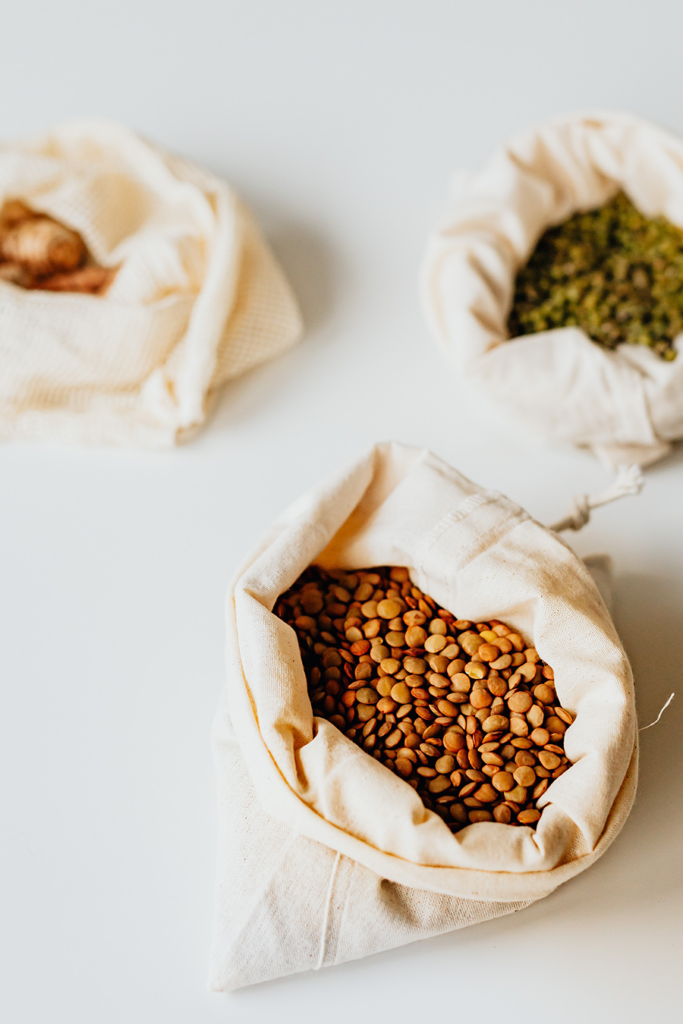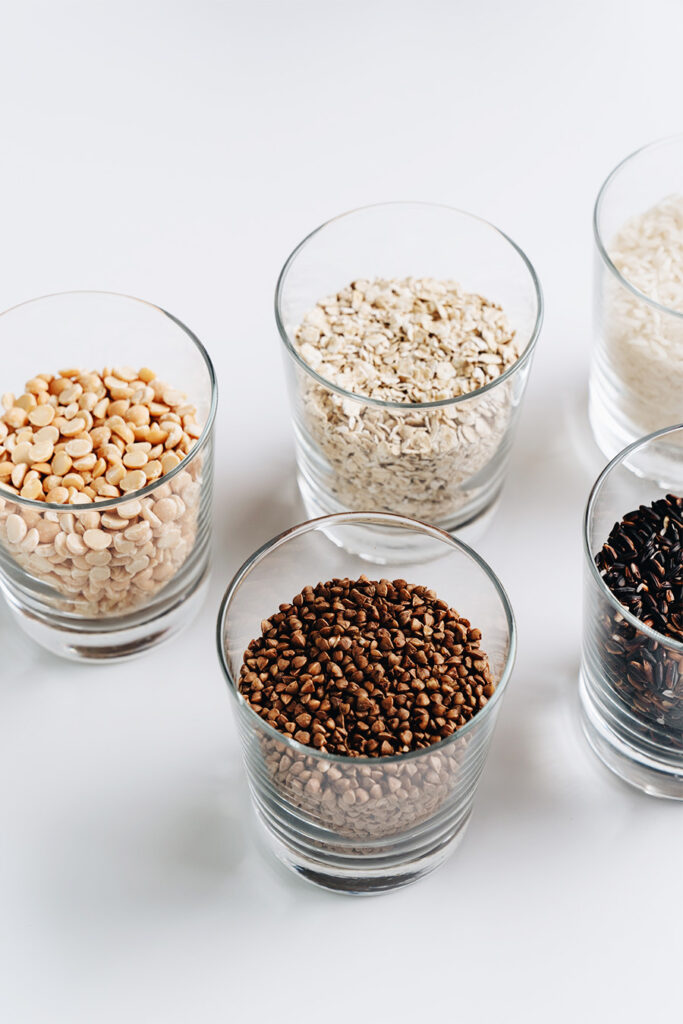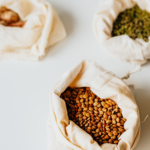
This veggie-packed lentil stew recipe is one of my rotating go-to’s packed full of veggies, protein, and flavor! I recommend making a double or triple batch to enjoy throughout the week or to freeze as a quick meal.
The Many Nutritional Benefits of Lentils
Lentils are a nutritious and versatile legume that offer many health benefits. Here are some of the key benefits of eating lentils:
Here are the Top 5 Benefits of Adding Lentils to Your Diet:
- High in protein: Lentils are a great source of plant-based protein, containing around 18 grams of protein per cup. This makes them a good option for vegetarians, vegans, or anyone looking to reduce their meat consumption
- Rich in fiber: Lentils are high in both soluble and insoluble fiber, which can help promote digestive health, lower cholesterol, and reduce the risk of heart disease.
- Low glycemic index: Lentils have a low glycemic index, which means they release energy slowly and can help regulate blood sugar levels. This makes them a good choice for people with diabetes or those looking to manage their blood sugar levels.
- Rich in vitamins and minerals: Lentils are a good source of several vitamins and minerals, including iron, folate, potassium, and magnesium. Iron is particularly important for people who follow a vegetarian or vegan diet, as it can be challenging to get enough iron from plant-based foods.
- Versatile: Lentils are easy to cook and can be used in various dishes, from soups and stews to salads and curries. They also come in different varieties, such as green, brown, red, and black, each with its unique taste and texture.
Overall, lentils are an excellent addition to a healthy diet and can provide a range of health benefits.

Lentil 101
There are several different types of lentils, each with its own unique flavor, texture, and culinary uses. Here are some of the most common types of lentils and their characteristics:
- Brown lentils: These are the most common type of lentils, with a mild, earthy flavor and a soft texture when cooked. They hold their shape well and are good for use in soups, stews, and curries.
- Green lentils (also known as French lentils or Puy lentils): These are smaller and darker in color than brown lentils, with a nutty flavor and a firm texture. They hold their shape well when cooked and are ideal for use in salads or as a side dish.
- Red lentils: These are the sweetest and softest of all lentils, with a pinkish-red color and a slightly sweet, nutty flavor. They cook quickly and tend to break down into a creamy texture, making them great for use in soups, stews, and curries.
- Black lentils (also known as beluga lentils): These are small and shiny with a mild, slightly sweet flavor and a firm texture. They hold their shape well and are ideal for use in salads, as a side dish, or as a meat substitute in vegetarian dishes.
- Yellow lentils (also known as split yellow lentils or moong dal): These are small and yellow in color, with a mild, nutty flavor and a creamy texture when cooked. They are commonly used in Indian cuisine to make dal, a flavorful lentil soup.
Overall, the type of lentil you choose will depend on the recipe you are making and your personal taste preferences. Different types of lentils are best suited for different culinary uses, so it’s a good idea to experiment with a few different varieties to see which ones you like best.
How to Prepare Dry Lentils
Preparing dry lentils is a straightforward process that requires a few basic steps.
Here’s how to do it:
- Sort and rinse the lentils: Spread the lentils out on a plate or tray and pick through them to remove any debris or stones. Then, rinse the lentils under cold running water.
- Soak the lentils (optional): While not necessary, soaking lentils can help to reduce cooking time and make them easier to digest. To soak lentils, place them in a bowl or pot and cover with enough water to submerge them completely. Soak for at least 2 hours, or overnight if possible.
- Drain and rinse the lentils: After soaking, drain the lentils and rinse them under cold running water.
- Cook the lentils: Place the lentils in a pot and add enough water or broth to cover them by about an inch. Bring to a boil, then reduce the heat and simmer for 20-30 minutes, or until the lentils are tender but not mushy. Skim off any foam that rises to the top during cooking.
- Drain and use: Once the lentils are cooked, drain any excess liquid and use them in your desired recipe.
Note: The cooking time and water ratio may vary slightly depending on the type of lentils and your recipe. Also, it is important not to add salt to the cooking water as it can make the lentils tough. Instead, add salt to the dish when seasoning.
Time Savers For This Recipe:
While this recipe is incredibly fast to make, you can save more time by:
- Use canned lentils to save on prep time
- Use pre-chopped fresh vegetables from the produce section of the grocery store
- Make a double or triple batch to freeze and reheat in a pinch

Veggie Packed Lentil Stew
- Prep Time: 10 minutes
- Cook Time: 30 minutes
- Total Time: 40 minutes
Description
This veggie-packed lentil stew is incredibly easy and quick to make when you are short on time or are craving comfort food.
Ingredients
1 1/2 cups uncooked red lentils
1 24oz bag frozen riced cauliflower
1 butternut squash, diced
1 sweet potato, diced
3 cups vegetable broth
3 cups water
3 cloves garlic, minced
1 piece ginger, minced
2 teaspoons each ground coriander, garam masala, and chili powder
1/2 can of coconut milk
Instructions
- Place all the ingredients in a large pot & bring to a boil, then simmer for 30 minutes.
- Stir in the coconut milk and as much water as needed to get the right consistency.
- Enjoy!
+ show Comments
- Hide Comments
add a comment